Kauas origins are volcanic, the island having been formed at approximately six million years ago, is the oldest of the main islands. One of the wettest spots on earth, with an annual average rainfall of 460 inches, is located on the east side of Mount Waiʻaleʻale. The high annual rainfall has eroded deep valleys in the central mountains, carving out canyons with many scenic waterfalls. Outside of the port, there were lots of buses to take hundreds of people off to their adventures for the day.

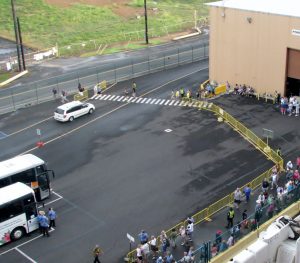
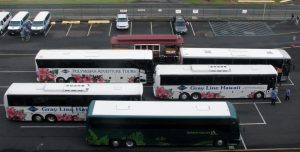
Oral traditions tell of the sacred births of Kaua`inui and Wailuanuiho`ano and the establishment of this area as a birthing site reserved for royalty. These ancient stones were synonymous with both birth and death in ancient times. Pregnant women carrying Kauai’s unborn royalty were led here to give birth. The location was also used to sacrifice enemy warriors and others unfortunate people to the local gods. It is still considered as one of Hawaii’s most sacred sites. Kaua’s king, Kaumuali`i was the last chief to be born here.
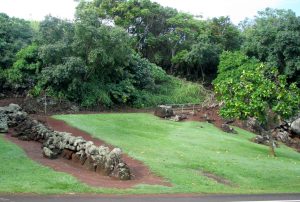
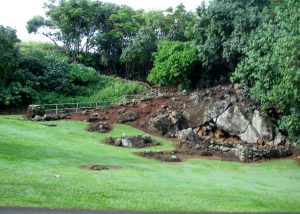
The basket maker was sitting by the waterfalls on Wailua Heritage Trail making palm baskets.
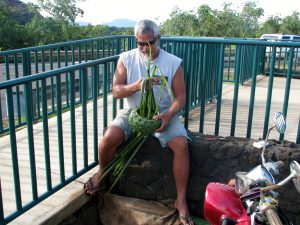
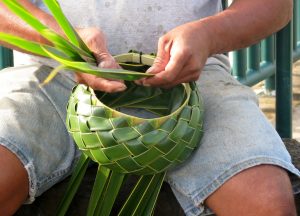
ʻŌpaekaʻa Falls is a waterfall located on the ʻŌpaekaʻa Stream in Wailua River State Park on the eastern side of the Hawaiian island of Kauai.of Kauai. It is a 151 foot waterfall that flows over basalt from volcanic eruptions millions of years ago.
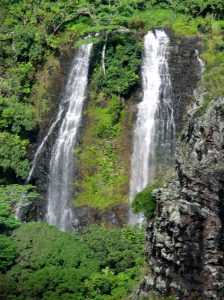
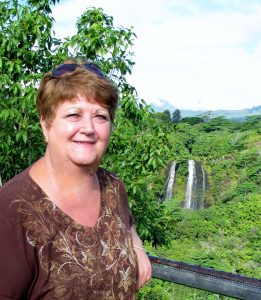
Hawaii’s official State bird is the Hawaiian goose, or Nene, but on Kauai, everyone jokes that the “official” birds of the Garden Island are feral chickens, especially the wild roasters. The “mua” or red jungle fowl were brought to Kauai by the Polynesians as a source of food, thriving on an island where they have no real predators.
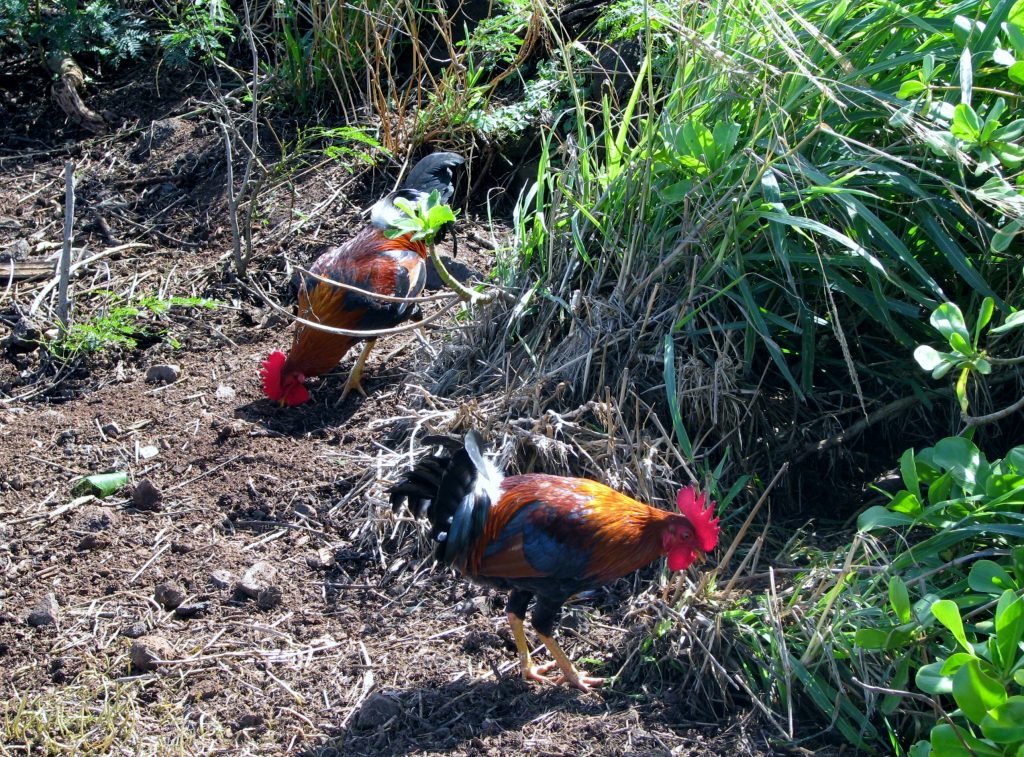
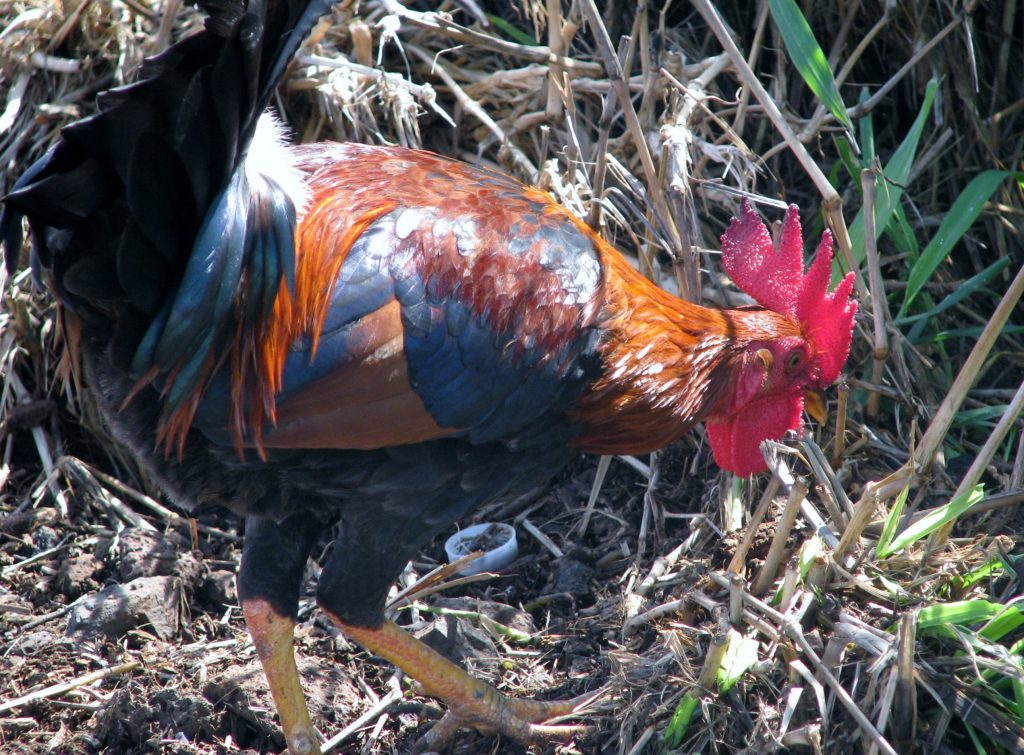
Along with the roasters there were lots of cats at this location.
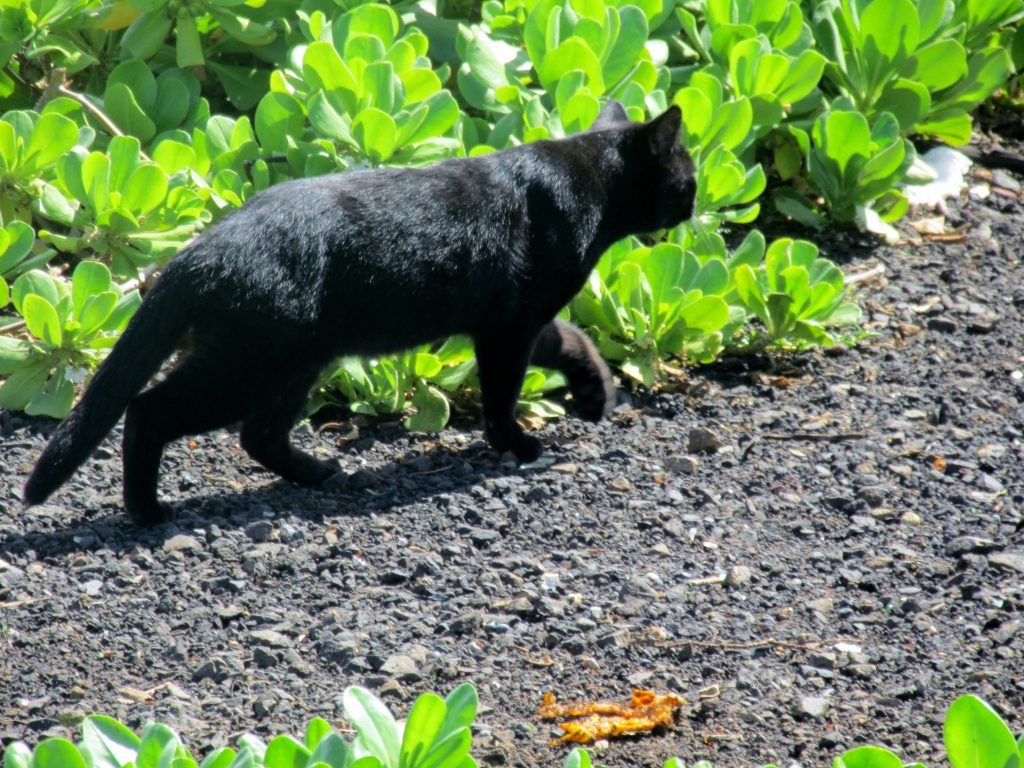
Ninini Point Lighthouse, standing at 86 feet, is a snow-white tower marks the northern entrance to Nawiliwili Bay.
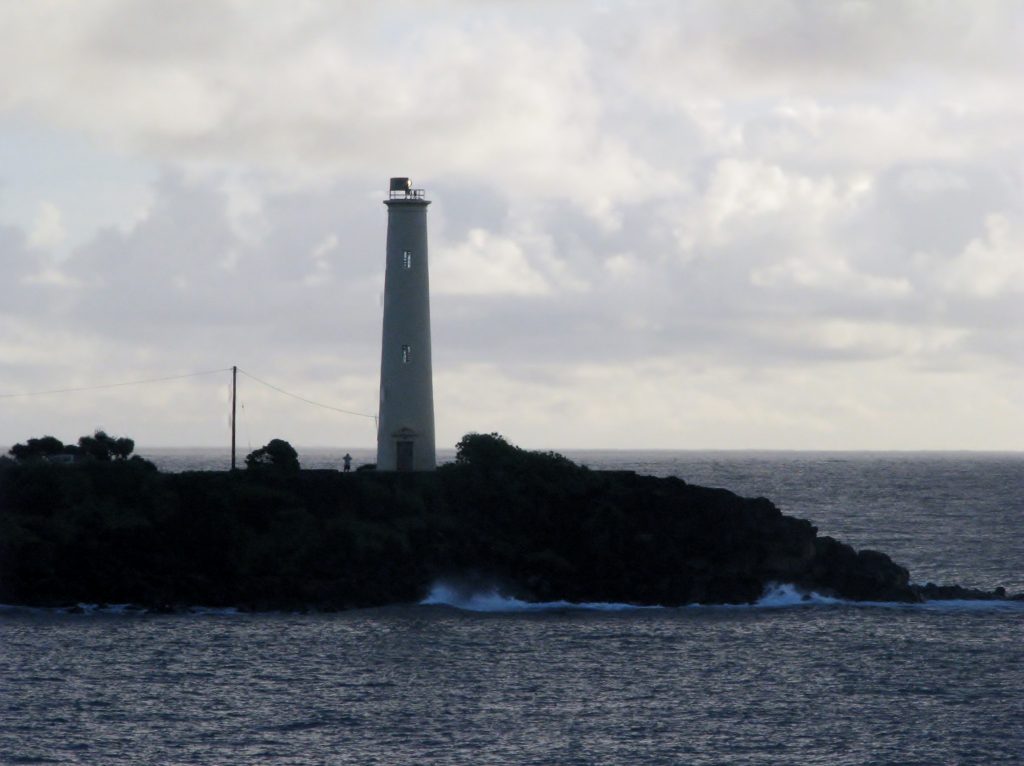
On Kauai’s east side between Wailua and Kapaa, is the Nounou Mountain range, more famously known as Sleeping Giant. Stare at the ridge from afar and with a little imagination you can make out what looks like a human figure lying on his back. Hawaiian legends say this giant was tricked by villagers into eating a vast amount of rocks hidden in fish and poi. Sleepy from the meal, the giant took a nap and hasn’t woken since.
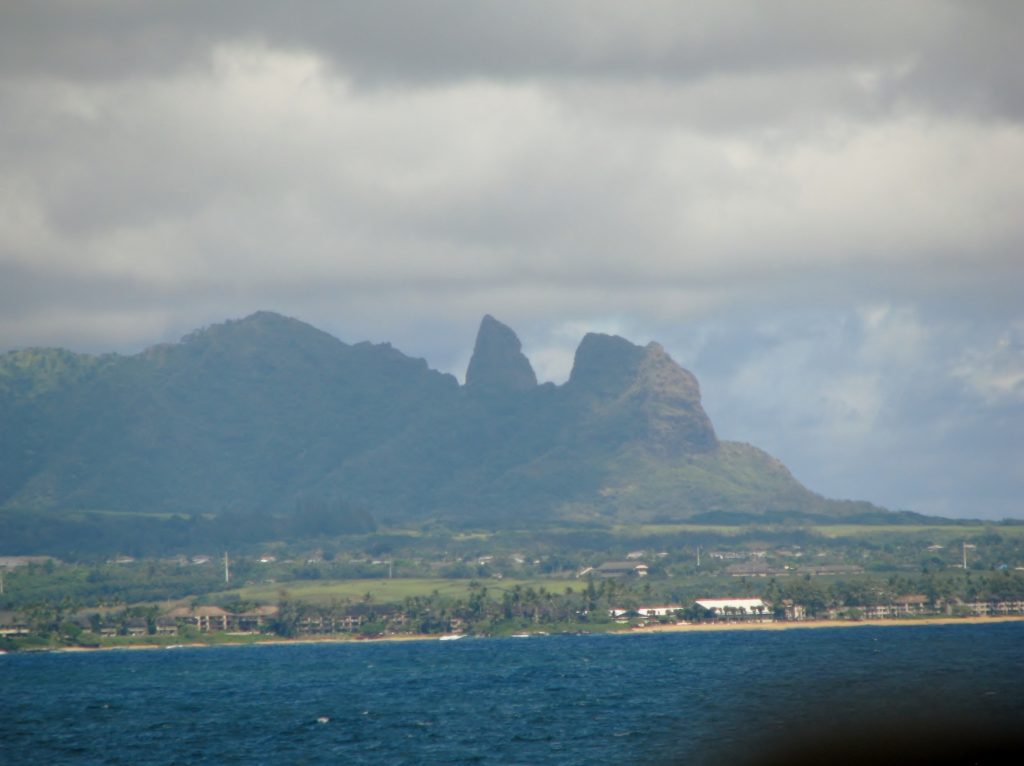
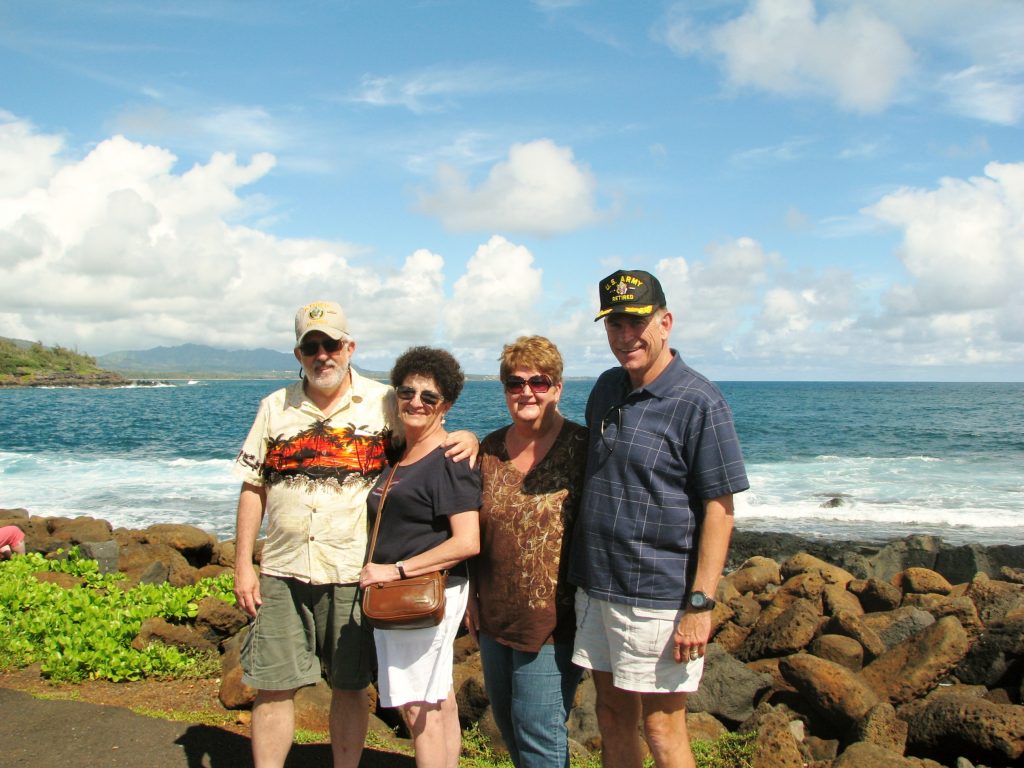
Our next stop was a slow relaxing ride up the Wailus River to the Fern Grotto was about two miles. Along the way we passed lush jungles, cascading waterfalls and people paddle boarding and canoeing. The musicians on board played native songs and the captain shared stories of ancient Hawaii.
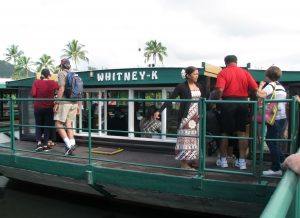
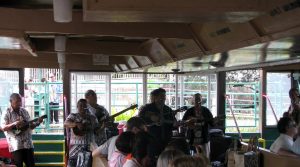
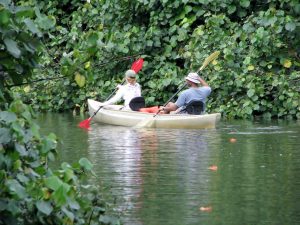
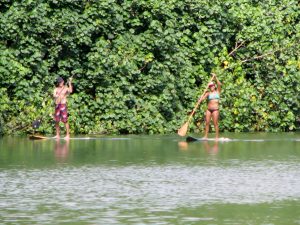
The world-famous Kauai Fern Grotto (Ma’ama’akualono) is a natural lava-rock grotto with long Boston Sword ferns growing upside down from the roof and cooled by misting waterfalls.
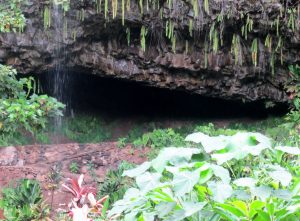
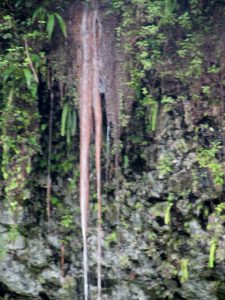
Once a royal gathering place, this area was dedicated to the major god, Lono. Its natural amphitheater acoustics made it a perfect place for serenading musicians and a Hula demonstration.
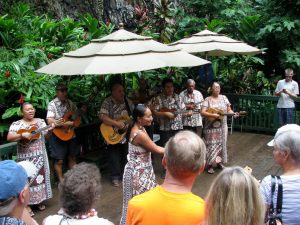
Native Hawaiian plants and colorful exotic tropical plants provide a rain-forest atmosphere.
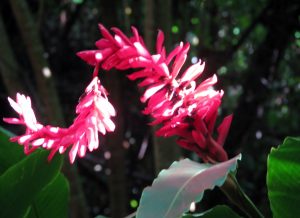
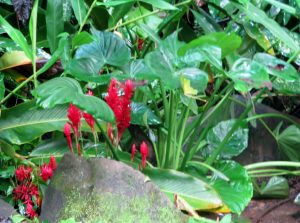
On our returned trip on the Wailus River the young hula dancers entertained us and provided a lesson inviting everyone to join them in a final dance.
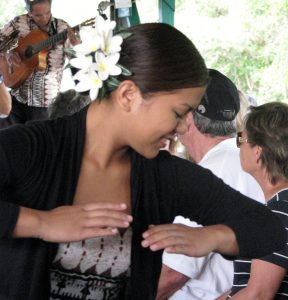
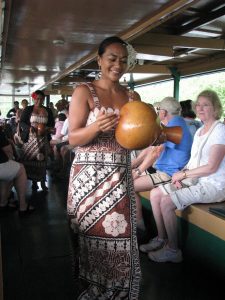
The evening arrived and it was time for us to attend a Luau. We listen to traditional Hawaiian music as we shopped the local vendors stalls and drank Mai Tais and Blue Hawaiians.
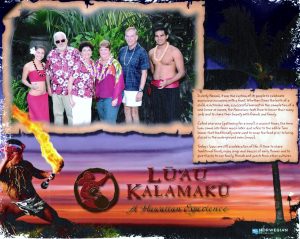
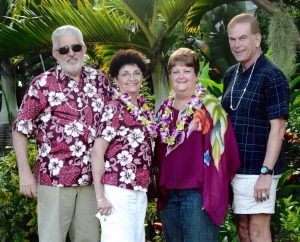
We were greeted at Kilohana, a restored plantation estate, with fresh-flower leis for the girls and shell leis for the guys.
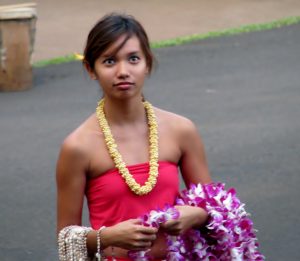
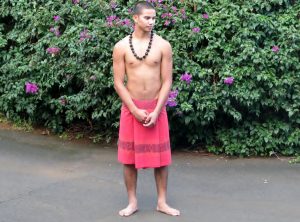
For the luau, we were having shredded kalua pork cooked in an imu. This is an underground oven that uses a combination of hot coals, stones and layers of leaves and cloth or mats to steam the food. To build an imu dig into the earth about 2 feet to 4 feet deep with sloping sides. Put heated stones in the bottom, then a layer of green vegetation, food, covering material, and dirt. A large whole pig, in a good hot imu, may take from 6 to 8 hours of steaming time.
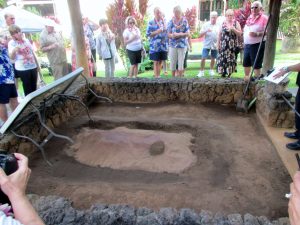
The pavilion was setup for the dinner and the nights entertainment.
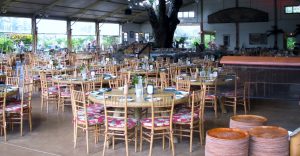
We visited the various artisan shops located around the grounds before going over to the house for dinner. We took a ride on the Kauai Plantation Railway, winding through the plantation’s working farms and orchards.
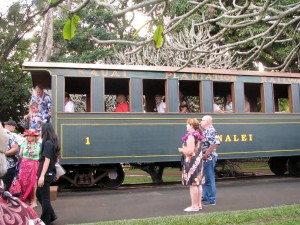
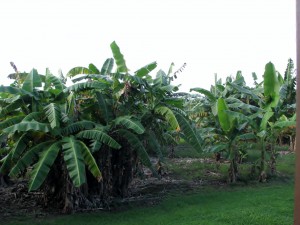
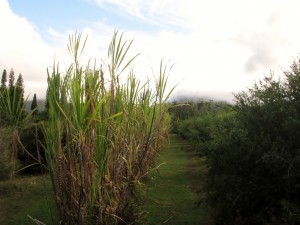
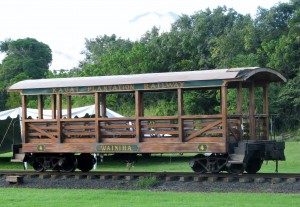
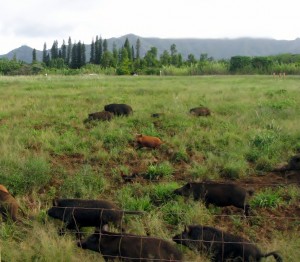
As we rode along we came upon the pig pens, the engineer threw bread out to the pigs. They all started running along side of the train, in hopes of getting one of the slices of bread.
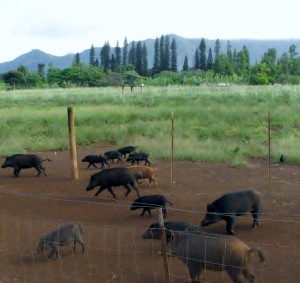
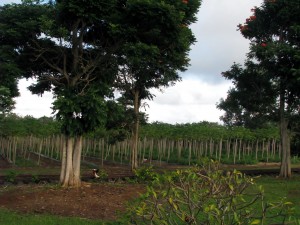
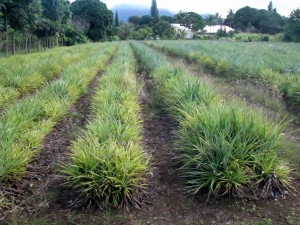
The Pu, a Hawaiian conch shell, was blown to let us know that it was time for dinner.
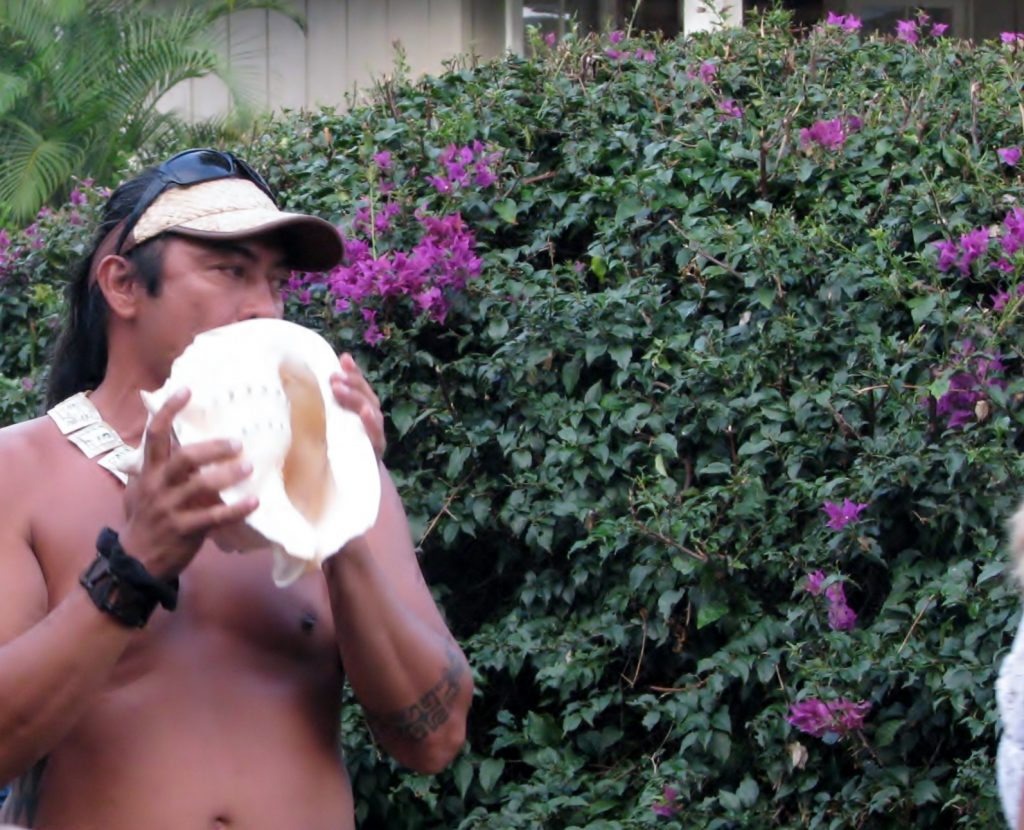
We had signed up for the VIP package so we walked over to the mansion, Kilohana, on the manicured green lawn. The 16,000 square-foot Tudor mansion was home to one of the island’s most prominent families. The picturesque venue is used now to host tours, gatherings and the theatrical luau. There were shops upstairs and downstairs in the home.
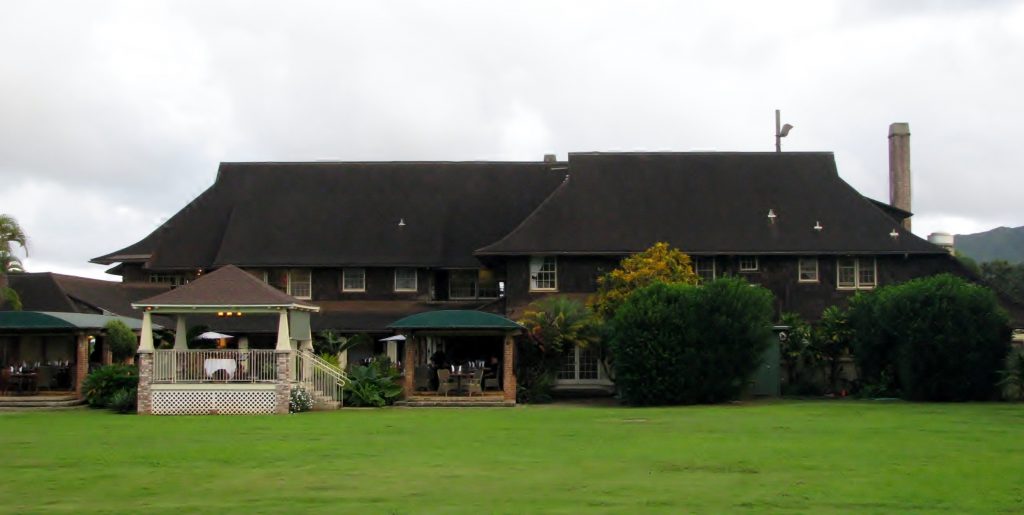
We were seated around an open-air courtyard with views of the plantation grounds and Mt. Waialeale in the distance.
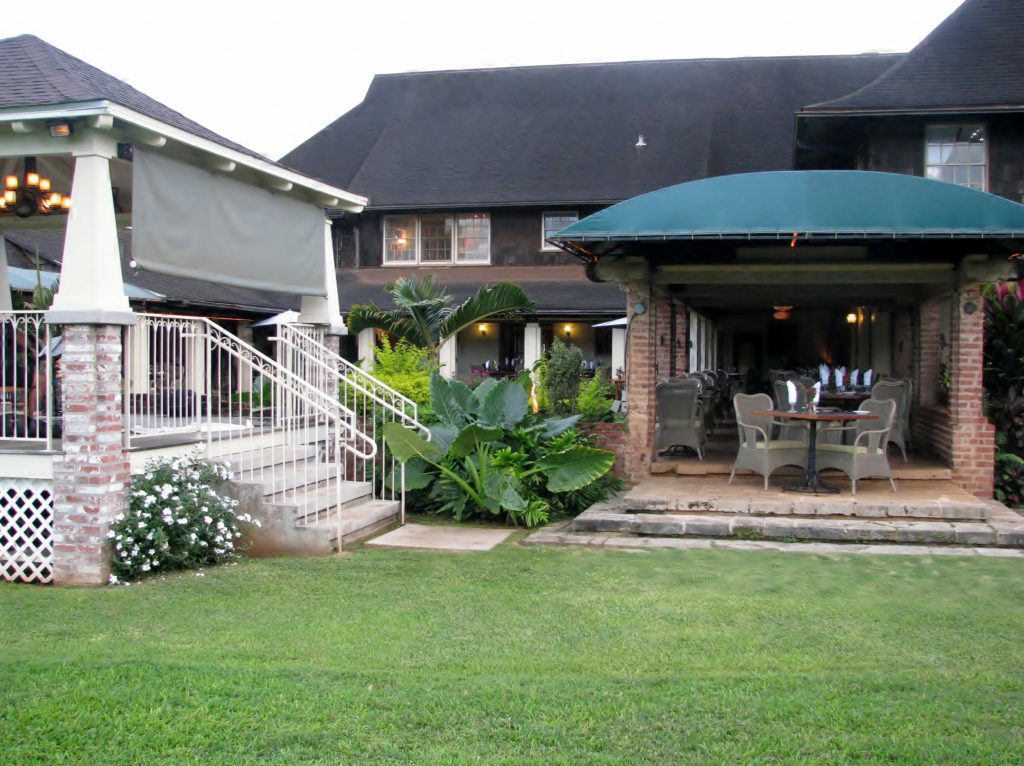
As we sipped our Champagne and sparkling cider, we watched a hula dancer, who told beautiful stories of Hawaiian with her elegant and graceful movements.
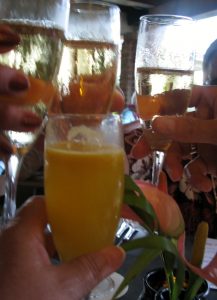
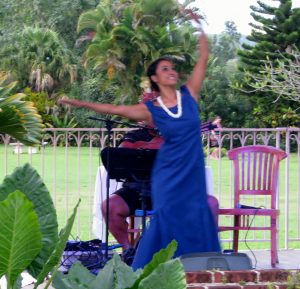
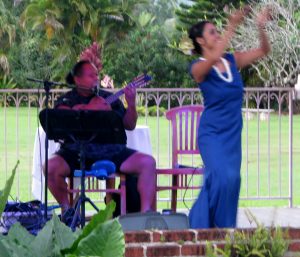
Our starter was a chicken wontons with pineapple sweet and sour sauce. The salad course was smoked fish and lomiloni tomato salad with an aged red wine vinaigrette.
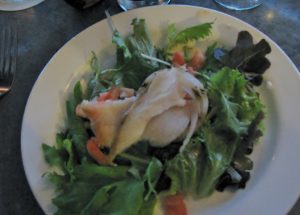
The entree was Imu roasted pork and roast garlic rubbed fresh fish wrapped and steamed in ti leaves with lemon grass sauce and Asian ratatouille. There was also Molaa purple sweet potato and stir fry vegetables served family style. Dessert was a cheesecake served at the house. After arriving at the pavilion, we continued with more desserts from the buffet.
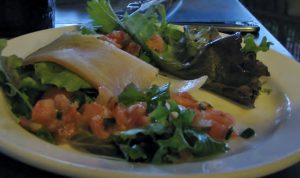
When it was time for us to join the rest of the attendees, we were guided from the house to the pavilion by torch carrying guides. Upon our arrival we were seated in the front row around the stage. The people behind us was not happy. They had thought there would be no one in front of them.
The production told the story of one family’s voyage from Tahiti to Kauai, told through vivid storytelling & dance in an enchanting setting. In the opening scene a father remembering a time of struggle, recalls a decision, a journey and their prayers to Akua (God).
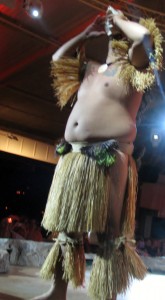
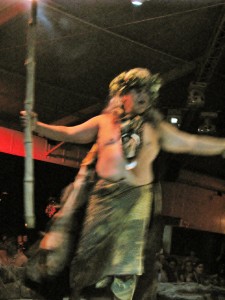
Orama, the daughter, scolds heaven for taking both her father and her love Ari on this foolish journey.
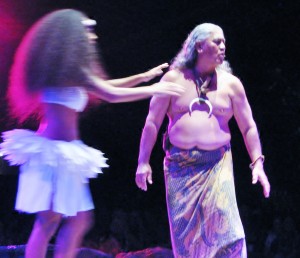
The father asks God to watch over his only child, to protect her and show her the future.
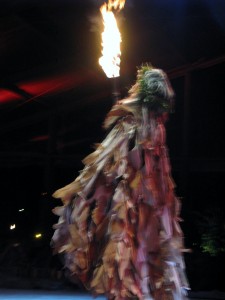
Before the departure there was flirtatious fun with seductive dances to ensure a safe return. Orama, left behind, finds hope in a vision of the future. She will see her lover Ari again and they will have a child.
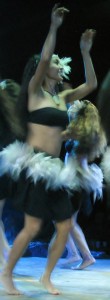
The Blue Wind calls as the men journey towards uncharted waters. Hula Kahiko, adorned with ferns of the upland sing praise of this land.
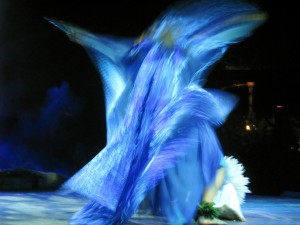
The men prepare mentally for a grueling journey into the unknown with a dance of determination.
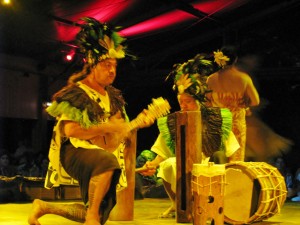
Planting Taro, pounding bark cloth, spear fishing and wrestling, life in the new land begins again.
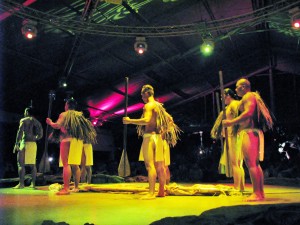
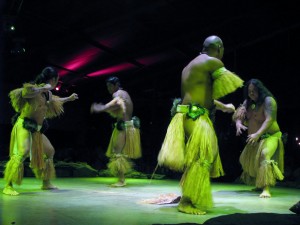
It is time “Send for my dauther!” Legends and tales abound in the new land of Pele the Goddess of Fire, her long sleep, her lover Lohiau, her sister Hiiaka and the Mo’o or Dragon Women of Haena…Ari sees them in his dreams.
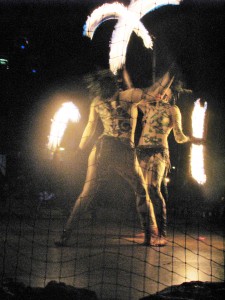
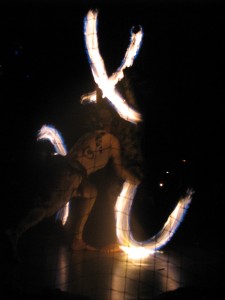
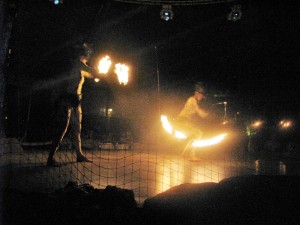
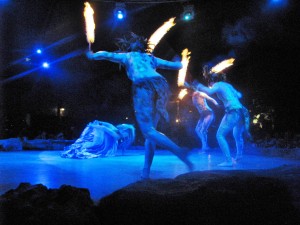
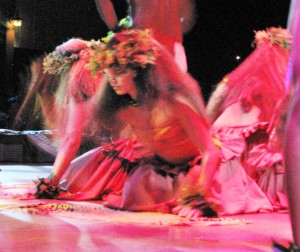
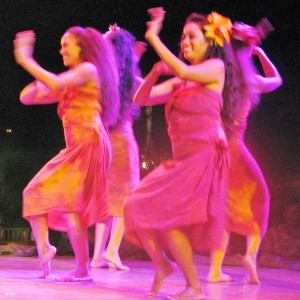
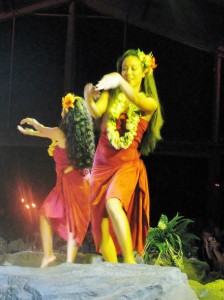
Orama’s vision becomes a reality with a family’s reunion, a wedding and a child born in the new land. Kalamaku…the Flamed Torch lives on.
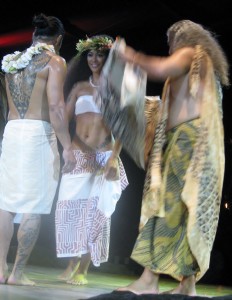
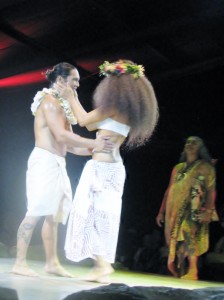
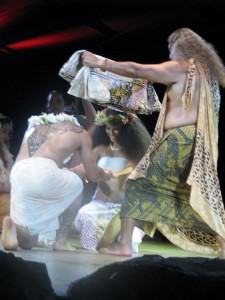
After the show we got on the bus for our return to the ship. It had been a very full day and we were ready for bed.